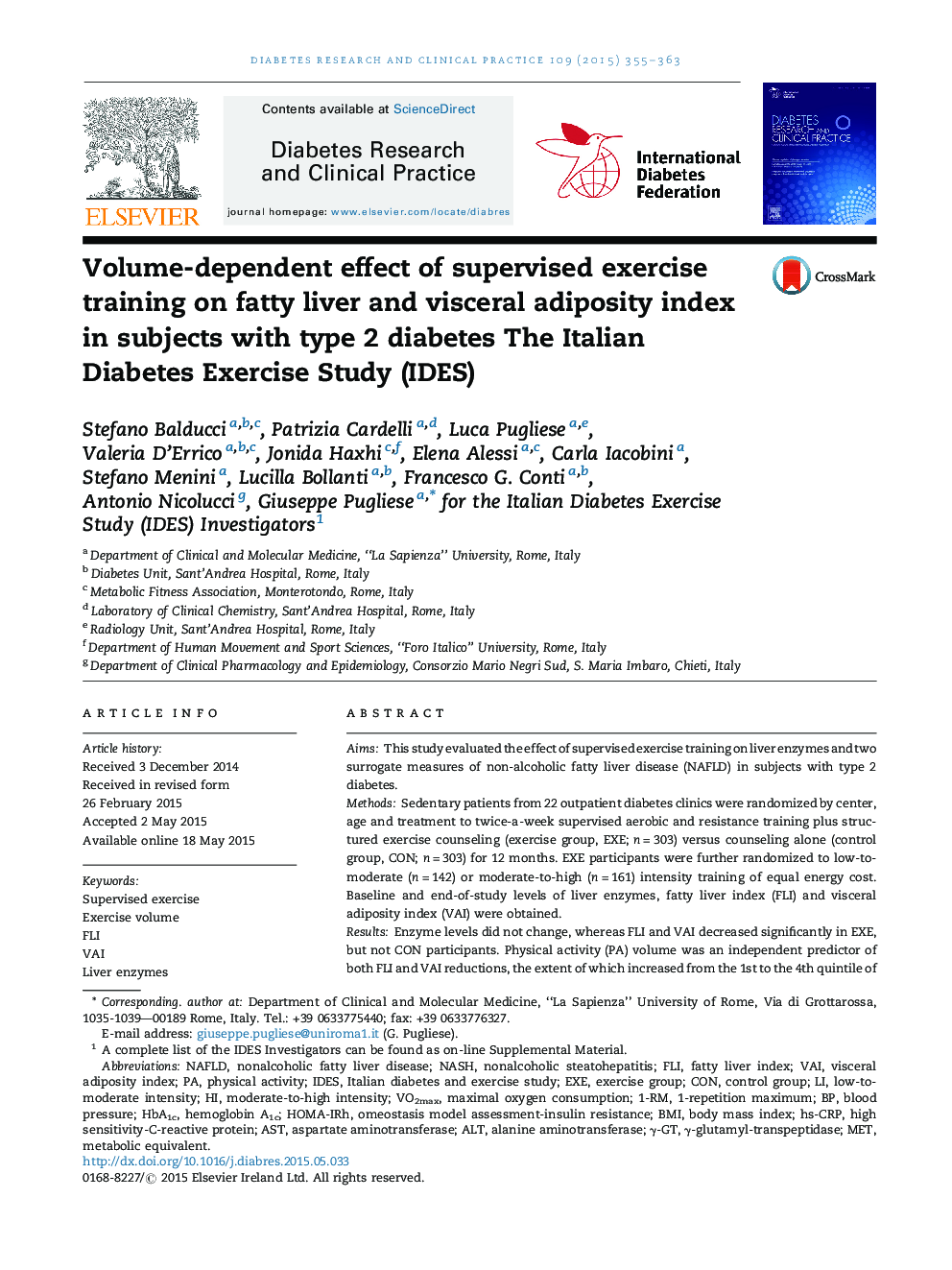| Article ID | Journal | Published Year | Pages | File Type |
|---|---|---|---|---|
| 5899258 | Diabetes Research and Clinical Practice | 2015 | 9 Pages |
â¢Supervised exercise reduces FLI and VAI, two validated NAFLD markers.â¢The effect is dependent on PA volume and changes in fitness.â¢Impact of intensity is elusive.
AimsThis study evaluated the effect of supervised exercise training on liver enzymes and two surrogate measures of non-alcoholic fatty liver disease (NAFLD) in subjects with type 2 diabetes.MethodsSedentary patients from 22 outpatient diabetes clinics were randomized by center, age and treatment to twice-a-week supervised aerobic and resistance training plus structured exercise counseling (exercise group, EXE; n = 303) versus counseling alone (control group, CON; n = 303) for 12 months. EXE participants were further randomized to low-to-moderate (n = 142) or moderate-to-high (n = 161) intensity training of equal energy cost. Baseline and end-of-study levels of liver enzymes, fatty liver index (FLI) and visceral adiposity index (VAI) were obtained.ResultsEnzyme levels did not change, whereas FLI and VAI decreased significantly in EXE, but not CON participants. Physical activity (PA) volume was an independent predictor of both FLI and VAI reductions, the extent of which increased from the 1st to the 4th quintile of PA volume and baseline to end-of-study changes in fitness parameters. Differences in the effect of LI versus HI training were negligible.ConclusionsData from this large cohort of subjects with type 2 diabetes indicate that FLI and VAI decrease with supervised training in a volume-dependent manner.
